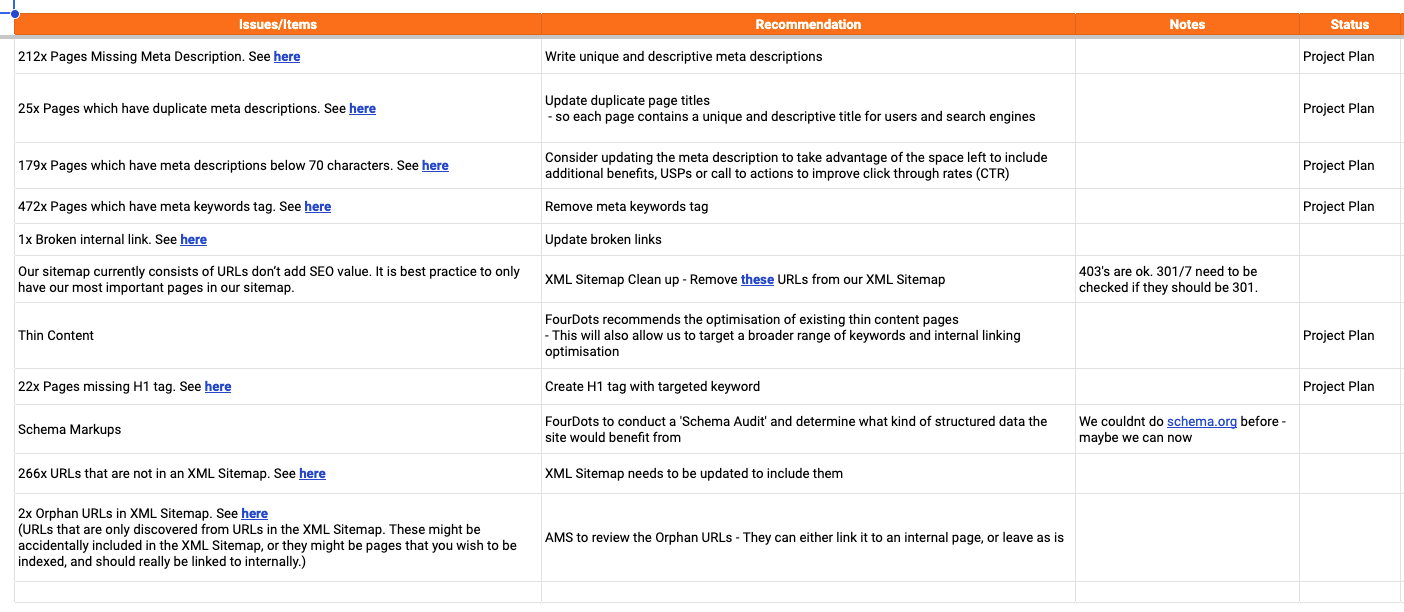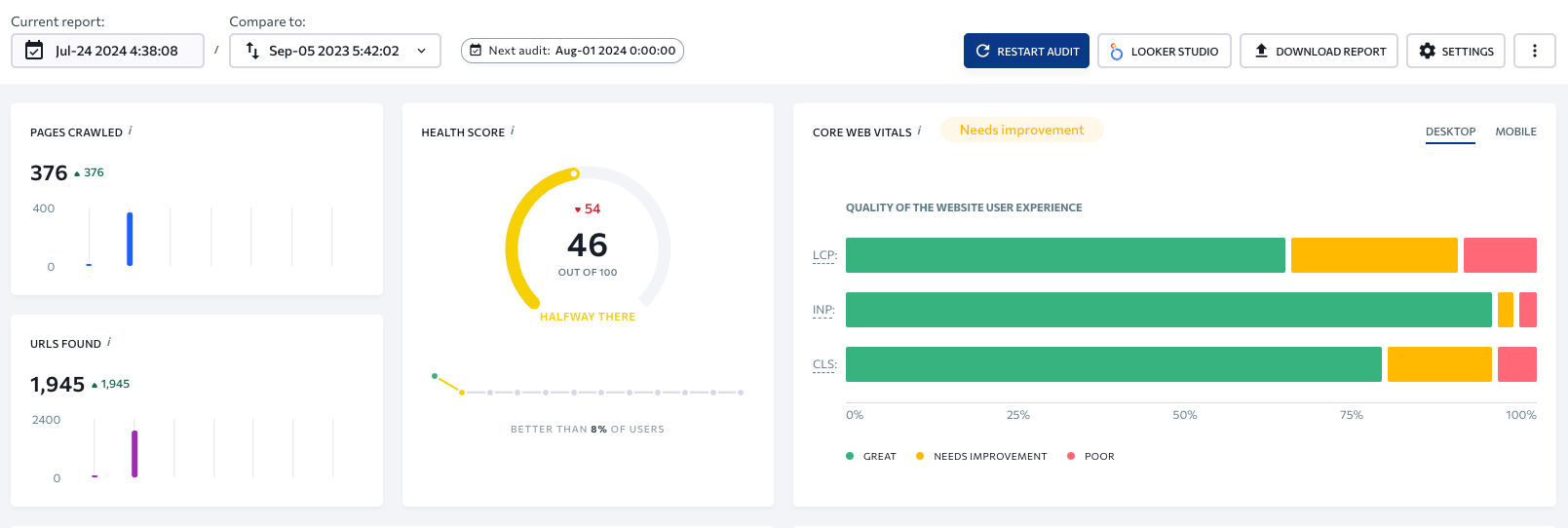
What is a website audit?
Post Author: Harry James
Post Date: 25 July 2024
What is a Website Audit?
As an SEO expert, I often get asked, “What is a website audit?” Simply put, a website audit is a comprehensive analysis of a website’s performance. It evaluates a website’s ability to achieve its objectives and determines what improvements are necessary. A website audit scrutinizes various aspects of the site, including technical issues, SEO, user experience (UX), content, and more.
Why Conduct a Website Audit?
Conducting a website audit is crucial for several reasons. First, it helps identify and rectify issues that could be hindering the site’s performance. This could include broken links, slow load times, or poor mobile optimization. Second, an audit can enhance a website’s SEO, leading to better search engine rankings and increased organic traffic. Third, it improves the user experience, ensuring visitors have a smooth and enjoyable interaction with the site.

What is in a Website Audit?
A comprehensive website audit covers several key areas. Each of these areas plays a significant role in the overall health and performance of your website. Let’s delve into the components that make up a thorough website audit.
Technical SEO
Technical SEO focuses on the backend structure of your website. It includes elements like site speed, mobile-friendliness, XML sitemaps, and website architecture. During an audit, these technical aspects are examined to ensure search engines can crawl and index your site effectively.
On-Page SEO
On-page SEO pertains to elements on your website’s pages that can be optimized for search engines. This includes meta tags, header tags, keyword usage, and image optimization. An audit will assess these elements to ensure they are properly optimized for better search engine rankings.
Off-Page SEO
Off-page SEO involves factors outside your website that influence your rankings. This includes backlinks, social signals, and online reputation. An audit will evaluate your off-page SEO efforts and suggest ways to improve them.
User Experience (UX)
User experience is critical for retaining visitors and encouraging conversions. During a website audit, the site’s navigation, layout, and overall usability are assessed. This helps identify any areas that might be causing frustration or confusion for users.
Content Analysis
Content is king in the digital world. A content audit examines the quality, relevance, and performance of the content on your site. This includes blog posts, landing pages, product descriptions, and more. The goal is to ensure your content is engaging, informative, and aligned with your target audience’s needs.
Mobile-Friendliness
With the increasing use of mobile devices, ensuring your website is mobile-friendly is crucial. A website audit will assess your site’s responsiveness and usability on mobile devices, ensuring a seamless experience for all users.
Security
Website security is paramount, especially for sites that handle sensitive information. An audit will check for vulnerabilities, SSL certificates, and other security measures to ensure your site is safe from threats.
How Do I Audit My Website Content?
Auditing website content is a vital part of a comprehensive website audit. Here’s a step-by-step guide to help you conduct a content audit effectively.
Step 1: Inventory Your Content
Start by creating a detailed inventory of all the content on your website. This includes blog posts, articles, landing pages, product descriptions, and multimedia content. You can use tools like Screaming Frog or a simple spreadsheet to list all URLs and relevant details.
Step 2: Analyze Content Performance
Evaluate the performance of each piece of content. Look at metrics like page views, bounce rate, average time on page, and conversions. Tools like Google Analytics can provide valuable insights into how your content is performing.
Step 3: Assess Content Quality
Examine the quality of your content. Is it well-written and free of grammatical errors? Does it provide value to your audience? Is it up-to-date and relevant? High-quality content should be informative, engaging, and aligned with your audience’s needs.
Step 4: Check for SEO Best Practices
Ensure your content follows SEO best practices. This includes proper keyword usage, optimized meta tags, header tags, and internal linking. Tools like Yoast SEO or SEMrush can help you identify areas for improvement.
Step 5: Identify Gaps and Opportunities
Identify content gaps and opportunities. Are there topics that are missing or not adequately covered? Are there high-performing keywords you’re not targeting? Use this information to plan future content that can fill these gaps and attract more traffic.
Step 6: Update and Improve
Based on your analysis, update and improve your content. This might involve rewriting outdated articles, adding new information, or optimizing for better SEO. Regularly refreshing your content ensures it remains relevant and valuable to your audience.
How Much Does a Website Audit Cost?
The cost of a website audit can vary widely depending on several factors. Here’s a breakdown of what influences the cost and what you can expect to pay.
Factors Influencing the Cost
- Size of the Website: Larger websites with more pages require more time and effort to audit, resulting in higher costs.
- Depth of the Audit: A basic audit might focus on key SEO elements, while a comprehensive audit will cover technical SEO, content, UX, and more.
- Expertise of the Auditor: Hiring a highly experienced SEO expert or agency will cost more than opting for a less experienced professional.
- Tools and Software: The use of advanced tools and software can add to the cost but also provide more detailed and accurate insights.
Typical Price Ranges
- Basic Audit: $500 to $1,000
- Standard Audit: $1,000 to $3,000
- Comprehensive Audit: $3,000 to $10,000
Is It Worth the Investment?
Investing in a website audit can yield significant returns. By identifying and fixing issues, you can improve your site’s performance, enhance user experience, and boost search engine rankings. This can lead to increased traffic, higher conversions, and ultimately, greater revenue.
What is the Difference Between SEO Audit and Website Audit?
While the terms SEO audit and website audit are often used interchangeably, they refer to different scopes of analysis. Understanding the distinction between the two can help you decide which one you need.
SEO Audit
An SEO audit focuses specifically on search engine optimization. It examines elements that influence your website’s visibility and ranking on search engines. Key areas of an SEO audit include:
- Technical SEO: Site speed, mobile-friendliness, crawlability, and indexability.
- On-Page SEO: Meta tags, header tags, keyword usage, and content optimization.
- Off-Page SEO: Backlinks, social signals, and online reputation.
Website Audit
A website audit is broader in scope and includes an SEO audit as part of its analysis. In addition to SEO, a website audit examines:
- User Experience (UX): Site navigation, layout, and usability.
- Content Quality: Relevance, engagement, and performance of content.
- Technical Issues: Broken links, 404 errors, and server issues.
- Security: SSL certificates, vulnerabilities, and data protection.
- Mobile-Friendliness: Responsiveness and usability on mobile devices.
When to Choose Each
- SEO Audit: Opt for an SEO audit if your primary goal is to improve your search engine rankings and attract more organic traffic. It’s ideal for sites that are already performing well in other areas but need a boost in SEO.
- Website Audit: Choose a website audit if you want a comprehensive analysis of your site’s overall performance. It’s perfect for identifying and addressing a wide range of issues, from technical problems to content quality and user experience.
The Process of Conducting a Website Audit
Now that we’ve covered the what, why, and cost of a website audit, let’s dive into the process of conducting one. A thorough website audit involves several steps, each focusing on a different aspect of your site.
Step 1: Define Your Goals
Before you start the audit, define your goals. What do you want to achieve? Are you looking to improve SEO, enhance user experience, or increase conversions? Having clear goals will help guide the audit and ensure you focus on the right areas.
Step 2: Gather Data
Collect data from various tools and sources. Google Analytics, Google Search Console, and SEO tools like SEMrush and Ahrefs are invaluable for gathering insights into your site’s performance. This data will form the foundation of your audit.
Step 3: Analyze Technical SEO
Begin by analyzing technical SEO. Check for issues like slow load times, broken links, and mobile-friendliness. Ensure your site is easy for search engines to crawl and index. Tools like Screaming Frog and Google’s PageSpeed Insights can help with this analysis.
Step 4: Evaluate On-Page SEO
Next, evaluate your on-page SEO. Review your meta tags, header tags, keyword usage, and internal linking. Ensure each page is optimized for relevant keywords and follows best SEO practices.
Step 5: Assess Off-Page SEO
Assess your off-page SEO by examining your backlink profile and online reputation. Tools like Ahrefs can help you analyze your backlinks and identify opportunities for improvement. Look for high-quality backlinks and remove any toxic links that could harm your rankings.
Step 6: Review User Experience (UX)
Review the user experience on your site. Test your site’s navigation, layout, and overall usability. Ensure it’s easy for visitors to find what they’re looking for and complete desired actions, such as making a purchase or filling out a form.
Step 7: Conduct a Content Audit
As discussed earlier, conduct a thorough content audit. Evaluate the quality, relevance, and performance of your content. Identify any gaps and opportunities for improvement.
Step 8: Check Mobile-Friendliness
Ensure your site is mobile-friendly. Test its responsiveness and usability on various devices and screen sizes. Google’s Mobile-Friendly Test tool can help you assess your site’s mobile performance.
Step 9: Analyze Security
Analyze your site’s security measures. Check for SSL certificates, vulnerabilities, and data protection practices. Ensure your site is secure and compliant with relevant regulations.
Step 10: Compile and Prioritize Findings
Compile your findings and prioritize them based on impact and urgency. Focus on fixing critical issues first, such as technical problems and security vulnerabilities. Then, address other areas like content and UX improvements.
Step 11: Implement Changes
Implement the necessary changes based on your audit findings. This may involve working with developers, content creators, and SEO experts to make the required adjustments. Monitor the impact of these changes over time to ensure they are effective.
Step 12: Monitor and Maintain
A website audit is not a one-time task. Regularly monitor your site’s performance and conduct periodic audits to ensure it continues to perform optimally. This ongoing maintenance will help you stay ahead of any issues and keep your site in top shape.
Conclusion
A website audit is an essential process for any website owner or digital marketer. It provides a comprehensive analysis of your site’s performance, identifies areas for improvement, and helps you achieve your online objectives. Whether you’re looking to boost SEO, enhance user experience, or ensure your site is secure and mobile-friendly, a website audit is the key to unlocking your site’s full potential.
By understanding what a website audit entails, how to audit your content, the costs involved, and the differences between an SEO audit and a website audit, you can make informed decisions and take the necessary steps to improve your website’s performance. Remember, regular audits and ongoing maintenance are crucial for staying ahead in the ever-evolving digital landscape.




